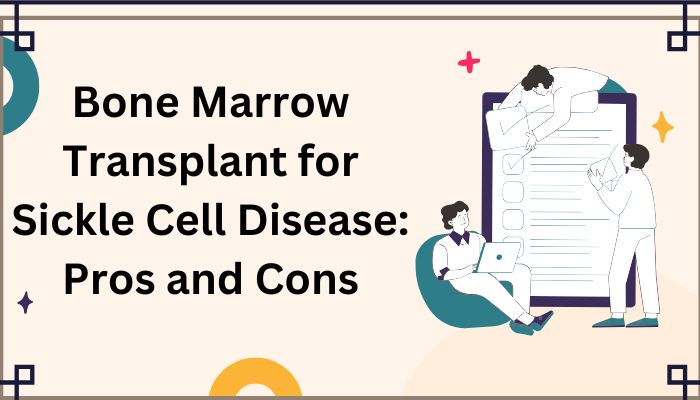Sickle Cell Disease (SCD) is a hereditary blood disorder characterized by the production of abnormal hemoglobin, leading to misshapen red blood cells. These sickle-shaped cells can block blood flow, causing pain crises, organ damage, and other complications. One of the most promising treatments for SCD is a bone marrow transplant (BMT), also known as a stem cell transplant. However, like any medical procedure, it has both benefits and risks. Here, we explore the pros and cons of bone marrow transplants for sickle cell disease.
Pros of Bone Marrow Transplant for Sickle Cell Disease
1. Potential Cure
BMT is currently the only available curative treatment for SCD. A successful transplant can replace the defective blood-forming cells with healthy ones, eliminating the production of sickle-shaped cells.
2. Reduction in Pain Crises
Patients who undergo a successful transplant often experience fewer or no pain crises, significantly improving their quality of life.
3. Decreased Risk of Organ Damage
SCD can cause long-term organ damage, including complications affecting the heart, lungs, kidneys, and brain. A successful transplant can halt disease progression and protect these organs from further damage.
4. Improved Life Expectancy
Since BMT can eliminate SCD-related complications, patients who undergo a successful transplant may have a longer and healthier life compared to those managing the disease with conventional treatments.
5. Elimination of the Need for Blood Transfusions and Medications
Patients with severe SCD often require frequent blood transfusions and medications such as hydroxyurea. A bone marrow transplant can reduce or eliminate the need for these treatments.
Cons of Bone Marrow Transplant for Sickle Cell Disease
1. Finding a Suitable Donor
A bone marrow transplant requires a compatible donor, typically a matched sibling. However, only about 20-30% of patients have a suitable sibling match. Alternative donor options, such as unrelated or haploidentical (partially matched) donors, increase the risks of complications.
2. Risk of Graft-versus-Host Disease (GVHD)
GVHD is a serious condition where the transplanted cells attack the recipient’s body. This can lead to severe complications, requiring intensive treatment and long-term management.
3. High Risk of Rejection and Complications
There is a possibility that the body may reject the transplanted cells, leading to transplant failure. This can result in severe health complications and may require additional treatments.
4. Intensive and Lengthy Recovery Process
The transplant process involves high-dose chemotherapy or radiation to destroy diseased bone marrow before receiving the donor cells. This weakens the immune system, increasing the risk of infections and requiring a prolonged recovery period.
5. Side Effects and Long-term Health Risks
Patients may experience short-term and long-term side effects such as nausea, hair loss, infertility, weakened immune function, and secondary cancers due to chemotherapy or radiation exposure.
6. Cost and Accessibility
Bone marrow transplants are expensive procedures, and not all patients have access to specialized medical centers that perform them. Insurance coverage varies, and financial constraints can make it difficult for some patients to undergo treatment.
Conclusion
A bone marrow transplant offers a potential cure for sickle cell disease, significantly improving quality of life and reducing disease-related complications. However, it is not without risks, including donor availability issues, transplant rejection, and serious side effects. Patients considering BMT should discuss the potential benefits and risks with their healthcare provider, evaluating factors such as donor compatibility, overall health status, and alternative treatment options. Ongoing research in gene therapy and alternative transplant methods may provide additional solutions for patients with sickle cell disease in the future.



 :
:









